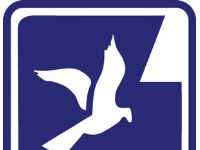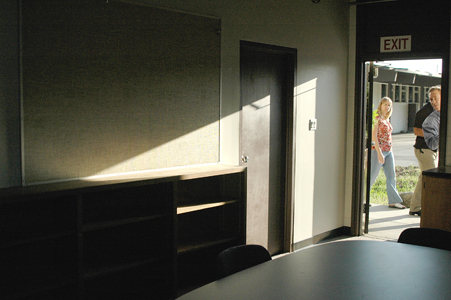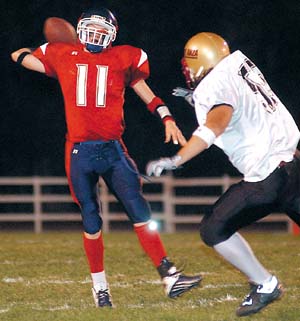The tale of a tiny cup
Last Saturday’s morning overcast hung around all day on the
Monterey shore. Temperatures were typical for the Monterey Bay in
August: water in the 50s and air about 10 degrees warmer.
Seven of us and a handful of staff from the Monterey Bay
Aquarium were aboard the 65-foot Derek M. Baylis.
The tale of a tiny cup
Last Saturday’s morning overcast hung around all day on the Monterey shore. Temperatures were typical for the Monterey Bay in August: water in the 50s and air about 10 degrees warmer.
Seven of us and a handful of staff from the Monterey Bay Aquarium were aboard the 65-foot Derek M. Baylis.
Four of us were along for the ride because a young man who is a friend of mine won the opportunity by faithfully serving as an aquarium volunteer.
The ride is fun, as time spent in boats nearly always is. We skated along the shore out to the buoy marking the bay’s southern lip at Pt. Pinos, hitting speeds up to a shade over 9 knots (that’s just over 10 mph) under the mainsail alone.
There was a little casual research going on, but much of it was just for the enlightenment of the visitors. A crab pot was hauled, and a load of bat stars spilled out, along with a large, spidery crab. Its claws, extended, would have stretched a foot or more.
A five-minute plankton net drag brought a small container of soupy water aboard. When a crew member placed a drop on a microscope slide, and brought the focus of a scope linked to a large LCD screen, a swarming picture of life emerged. Diatoms – plants with shells composed of silica – drifted about. Copepods, barnacle larvae, segmented worms and other creatures writhed around.
Ahead of us a cloud of seabirds signaled something was up. A large, male sea lion seemed to be playing with something. When we later spotted what had attracted his attention, an ocean sunfish lay at the surface, a large bite cut from its underside. Many aquarium-goers are familiar with the large, improbable fish that tends to bask near the surface. The fish look roughly like a half circle that sprouted two long fins. They’re slow, placid animals, easy marks for sea lions until they grow closer to their adult size of as much as 10 feet.
The research centered aboard the Baylis now has to do with ocean trash, and it was with trash where the real science and the real lesson began.
Capt. Dave Robinson produced a laminated map of the shore along Monterey and Pacific Grove. It was liberally peppered with red dots.
Using a gps receiver, each spot marked where trash had been recovered and catalogued.
Then Robinson produced a plastic cylinder about the size of a tennis ball can. It was crammed with bright bits of plastic, washers, unidentifiable fragments, even a disposable lighter.
“These were found in an animal,” he said. “What animal do you think it was?”
The guesses came quickly: shark, whale, sea turtle.
Robinson urged the group to think big, but to alter their thinking.
He finally had to spill the answer: albatross.
The birds use their enormous wings to cross oceans, coming ashore only to raise a single chick every other year. They seek fish far out at sea, and they course across a patch twice the size of Texas, a patch in the mid-Pacific where currents shunt debris, allowing it to spin in a slow circle for as long as it lasts.
With plastic, that’s a very, very long time.
The patch has doubled in size in eight years. A recent plankton survey revealed that the patch now contains six pounds of plastic for every pound of plankton.
Plankton – the tiny plants and animals drifting with currents – are the foundation for all sealife, food for small fish that feed big fish, and food for the biggest creatures of all, the great whales.
Plankton also produces 50 percent or more of the world’s oxygen.
Robinson had the crowd hooked. Ideas for managing plastic waste, producing less plastic and cleaning the oceans were tossed around.
But it was when Robinson asked what single plastic item the crew of the Baylis most frequently encountered that the magnitude of the challenge and the simplicity of solutions became clear.
The item most often found floating around Fishermen’s Wharf in Monterey is a small, plastic cup. The cups are ubiquitous on the pier. They are the cups each of the fishmongers uses to dispense samples of clam chowder.
Like a fisherman reeling in his catch, Robinson produced some cups that appeared to be made of white fiberboard. They’re made of spent sugarcane fiber, a waste product once sugar is extracted.
“These are not just biodegradable,” Robinson said. “They’re biocompostable, which we really like.”
The materials break down within a month in his own compost pile, turning what was a problem into a beneficial product.
Robinson said that his group, Sealife Conservation, had introduced the cups up and down the wharf, and not one merchant had adopted them.
“Why?” Robinson asked. “These cost 1 ½ cents each,” he said, answering his own question as he waved a plastic cup before producing the alternative. “And these are 2 cents apiece.”
Half of a penny. When most people won’t even stoop to pick up a lost penny, the idea of littering a national sanctuary with plastic for the sake of less than a cent seems unthinkable.
Pulling into the dock that day, there was a small chip bag floating in the water, a plastic baggie and – you guessed it – a small, plastic cup.
Walking back down the pier, none of us was inclined to accept the offer of a free sample of chowder.








